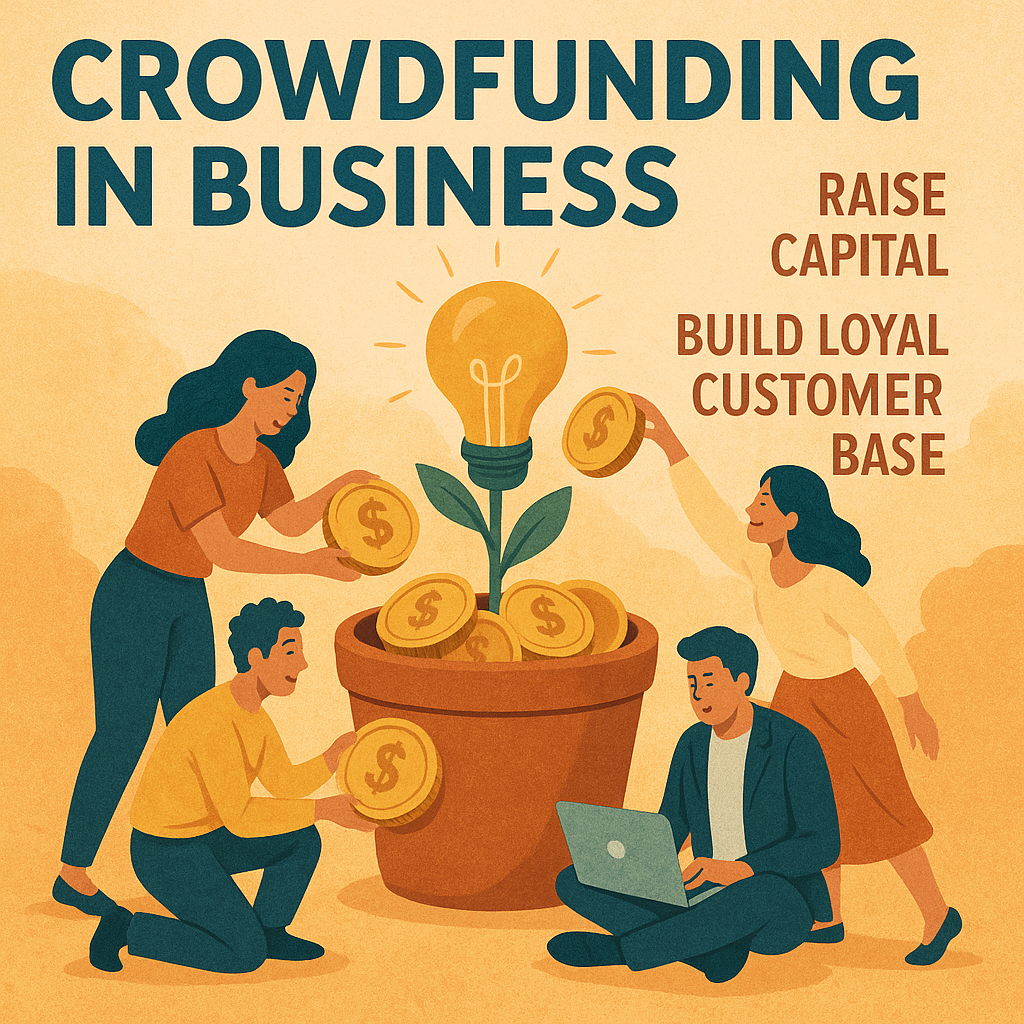Crowdfunding in Business: A Modern Tool for Growth and Innovation
In today’s entrepreneurial landscape, crowdfunding in business has emerged as a powerful method for raising capital. Startups and small businesses, once reliant on traditional funding methods, now turn to the crowd to fuel innovation and expansion. This blog post delves into how crowdfunding benefits businesses, the various types of crowdfunding, and best practices for launching a campaign.
1. What is Crowdfunding in Business?
Business crowdfunding involves collecting small investments or donations from a large number of people via online platforms. It enables entrepreneurs to present their ideas directly to the public, gaining both financial backing and early market validation. Platforms like Kickstarter, Indiegogo, and SeedInvest have revolutionized how companies raise funds and build communities.
2. Benefits of Crowdfunding for Businesses
- Capital Acquisition: Crowdfunding helps secure the funds needed to launch or expand a product without diluting ownership through venture capital or loans.
- Market Testing: A live campaign allows businesses to test their product’s appeal and refine messaging based on feedback.
- Brand Exposure: Successful campaigns attract media attention and boost brand visibility.
- Customer Loyalty: Early backers often become loyal advocates, promoting the business within their networks.
3. Types of Business Crowdfunding
- Reward-Based Crowdfunding: Businesses offer products, discounts, or exclusive perks to backers in return for their support.
- Equity Crowdfunding: Investors receive shares in the business. Suitable for startups looking to scale rapidly.
- Debt Crowdfunding: Also called peer-to-peer lending, businesses borrow from individuals and repay with interest.
- Donation-Based Crowdfunding: Primarily used for social enterprises or causes, donors contribute without expecting returns.
4. How to Launch a Business Crowdfunding Campaign
- Choose the Right Platform: Select a platform that aligns with your business goals and funding model.
- Create a Convincing Pitch: Highlight your business vision, value proposition, and funding goals with clarity and passion.
- Leverage Visuals and Video: High-quality content builds trust and communicates professionalism.
- Build Momentum Early: Engage friends, family, and existing customers early in the campaign to gain traction.
- Stay Transparent: Regular updates and transparent communication keep backers informed and engaged.
5. Challenges to Consider
- Competition: Many campaigns compete for attention on crowdfunding platforms.
- Time-Consuming: Running a campaign requires continuous effort in marketing, communication, and fulfillment.
- Risk of Failure: If funding goals aren’t met, the campaign might be canceled, affecting credibility.
Conclusion
Crowdfunding in business represents a dynamic, community-driven approach to funding and brand-building. It allows entrepreneurs to bring their visions to life with the support of a passionate audience. While it comes with challenges, a well-planned and executed campaign can be a catalyst for innovation, exposure, and lasting customer relationships. Embrace crowdfunding as more than just a funding tool—it’s a launchpad for business success.



